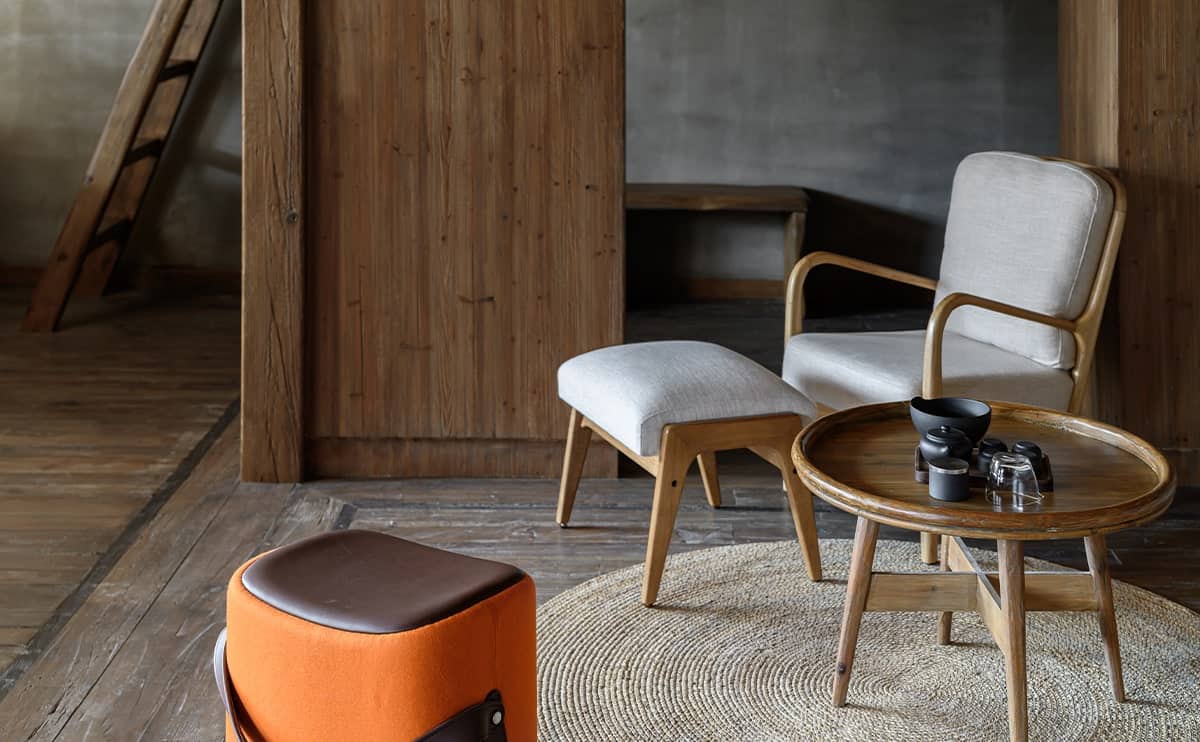Customer Support
Tile Category Guide – Understand Key Differences
Choosing the right tile isn’t just about looks. This guide explains how to pick the perfect material, texture, and size based on your space and lifestyle.
Wood Look Tile FAQ
Q1: Isn’t wood-look tile cold and boring — just for bathrooms?
Not anymore. Today’s wood-look tiles come in warm tones, cozy textures, and even matte finishes. They work beautifully in bedrooms, living rooms, and any space where you want the beauty of wood with the durability of tile.
Q2: I love wood floors but hate the upkeep — is this for me?
Absolutely. Wood-look tile gives you the charm of hardwood without the maintenance. No refinishing, no warping, no worries — just the natural look you love with easier care.
Q3: Is wood-look tile slippery when wet?
Most of our wood-look tiles have textured, slip-resistant surfaces, making them safe for wet areas like bathrooms and kitchens. Be sure to check the slip rating when choosing a style for those spaces.
Q4: Is it too hard for bedrooms or kids’ rooms?
Tile is firmer than wood or vinyl, but many families pair it with rugs or underfloor heating for added comfort. It’s a smart choice for high-use areas that need easy cleaning and durability.
Q5: Will the pattern repeat and look fake?
Not with our tiles. Each style features 8–12 unique faces using advanced printing, so the pattern variation looks natural — no obvious repeats like in laminate flooring.
Q6: How long will wood-look tile last? Does it fade or scratch over time?
Properly installed, wood-look tile can last over 20 years. The porcelain surface is highly scratch-resistant, won’t fade, and performs well even in high-traffic or wet areas.
Q7: Can I use wood-look tile if I’m not sure how to match it with my furniture?
Not at all. Wood-look tiles are some of the most versatile flooring options. Their neutral tones and realistic grains pair easily with modern, classic, or rustic interiors — so you don’t need to be a designer to get it right.
Q8: I rent — is it worth installing wood-look tile in a home I don’t own?
If you’re a landlord, wood-look tile is a smart long-term investment. It’s more durable than vinyl and adds value with its upscale look — tenants love it, and it saves you on future repairs. If you’re a renter, you may want to check with your landlord about removable tile solutions or flooring upgrades.
SPC FAQ
Q1: What is SPC flooring, and how is it different from regular vinyl?
SPC (Stone Plastic Composite) flooring has a rigid, limestone-based core that makes it more durable, waterproof, and stable than traditional vinyl. It doesn’t flex, swell, or dent like LVT or PVC.
Q2: Is SPC flooring really waterproof?
Yes. SPC is 100% waterproof. Its dense core and sealed surface make it ideal for bathrooms, kitchens, laundry rooms, and even basements.
Q3: Is SPC flooring good for homes with pets or kids?
Absolutely. It’s scratch-resistant, stain-resistant, and highly durable. SPC stands up to claws, spills, and toys better than laminate or soft vinyl.
Q4: Can I install SPC floors myself?
Yes. Most SPC flooring features a click-lock system that’s easy to install without glue or nails. You can float it over most existing floors.
Q5: How does SPC feel underfoot compared to tile?
SPC is firmer than wood but softer and warmer than ceramic tile. It reduces noise and feels more comfortable underfoot — ideal for bedrooms or upstairs units.
Q6: Will the pattern repeat or look fake across a large room?
No. SPC flooring uses multi-face printing with up to 10–12 plank variations per style, reducing repetition and giving a natural, real-wood look.
Q7: How long does SPC flooring last?
With proper installation and care, SPC flooring lasts over 20 years. It doesn’t fade, dent, or deform like many cheaper materials.
Q8: Is SPC worth the cost compared to cheaper vinyl?
Yes, especially if you want long-term performance. SPC is stronger, more waterproof, and lower maintenance than flexible vinyl — saving you time and money on repairs.
Peel and Stick FAQ
Q1. What is LVT, and when should I consider using it?
LVT (Luxury Vinyl Tile) is a flexible flooring made of PVC. It looks like wood or tile but installs faster and costs less. It’s ideal for renters, busy kitchens, temporary renovations, or any space that needs easy replacement or low maintenance.
Q2. Can I install it myself even if I’ve never done flooring before?
Yes! Most LVT options are peel-and-stick or glue-down. You only need scissors and a clean floor — no tools, no experience, no stress.
Q3. Can I install LVT in a rental apartment without damaging the floor?
Not at all. Peel-and-stick LVT is renter-safe. It lifts cleanly without glue marks or damage when removed properly.
Q4. Can I use it in high-moisture areas like kitchens?
Yes. LVT resists moisture, stains, and grease, making it perfect for kitchens, laundry rooms, and even busy mudrooms.
Q5. What if my subfloor isn’t perfectly flat? Will LVT still work?
LVT is forgiving. It flexes slightly and adapts to minor unevenness. You don’t need to level like with tile or SPC.
Q6. How long does LVT last in real use?
In homes, LVT lasts 5–8 years with basic care. It’s best for areas where floors get changed often, like rentals or kitchens.
Q7. Does it stain or require special cleaning?
Nope. Just sweep and mop. LVT resists stains and grease. No waxing, no sealing, no headaches.
Q8. Is LVT a good choice if I don’t want to fully renovate?
Yes. LVT is perfect when you just want a clean, quick, and affordable upgrade — especially in guest rooms, basements, or temporary-use spaces. It covers old floors, skips construction, and looks great in a day.


